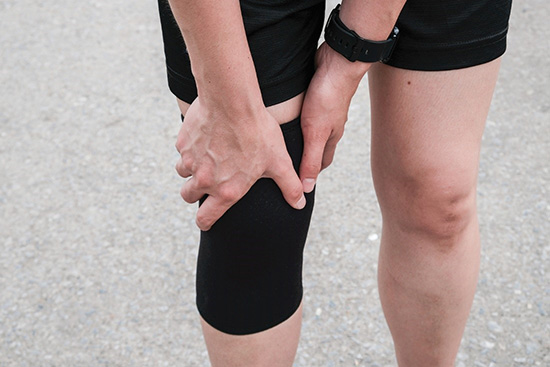Ask The Expert: Reducing your risk of being injured!
June 10, 2024 – Defence Stories

Caption
image of person bending over grasping at knee in brace.
Q: I was recently promoted into a leadership position, and I’m concerned about the number of injured personnel in my new unit. What is especially disturbing is that the majority of these injuries occurred in our sports and physical training program. It’s ironic that the practices we are using to maintain the operational readiness of our personnel are hurting them. This needs to change. Do you have some simple strategies I could use to try to reduce the injury rate in my unit?
- The New Boss
A: Dear New Boss: Congratulations on your promotion and recognizing the damage that preventable injuries are doing to your new unit. Over time, we have come to realize the important role that leaders play in reducing injury rates in the CAF by educating and encouraging their personnel regarding injury prevention. We now know that we can achieve great results and set our bodies up for success without causing pain, injury, or extensive recovery time.
The good news is that there are effective evidence-based injury prevention strategies that you can employ in your unit which are easy to implement, don’t require expensive facilities/equipment and won’t have a negative impact on your unit’s fitness:
- Running with combat boots, rucksacks, helmets, body amour or weapons should be limited to very short distances (100 metres or less) such as practising running for cover.
- Unless there are operational considerations, use body weight-proportional loads for rucksack marches – 30% body weight maximally.
- Alternate hard and easy workouts.
- Put greater emphasis on core strength development.
- Limit runs to 30 minutes maximum – a maximum of three times/week.
- Schedule at least 48 hrs of recovery between high-impact activities such as running, jumping and rucksack marches.
- Divide unit runs into ability groups.
- Avoid rapid increases in training load (intensity, frequency, and duration). Training load should not increase more than 10% a week.
- When exercising in hot environments, drink fluids before, during and after the workout.
- When possible, have the shortest personnel lead all unit runs, walks, and marches so that they set the pace.
- Have trained fitness staff design and deliver your unit’s fitness training.
- Take the Injury Reduction Strategy course developed by STF and offered by your local PSP Health Promotion Delivery personnel.
- Consult your local Health Promotion specialist when in doubt.
Bottom line: It’s very important that leaders recognize that preventable injuries are a major issue in the CAF, and that leaders have a critical role to play in addressing this problem. The strategies outlined in this article are proven to work and easy to implement. Your local PSP Health Promotion staff are trained to provide injury prevention briefings for units that request them. Thank you for helping to lead the change that will be so important to helping us reduce musculoskeletal injuries in the CAF. Injury Prevention is a Leadership issue!
Dr. Darrell Menard OMM MD, Dip Sport Med
Dr. Menard is the Surgeon General’s specialist advisor in sports medicine.
Strengthening the Forces is the CAF/DND’s health promotion program providing expert information, guidance, training, tools, and leadership support to improve CAF members’ health and well-being.
Page details
- Date modified: